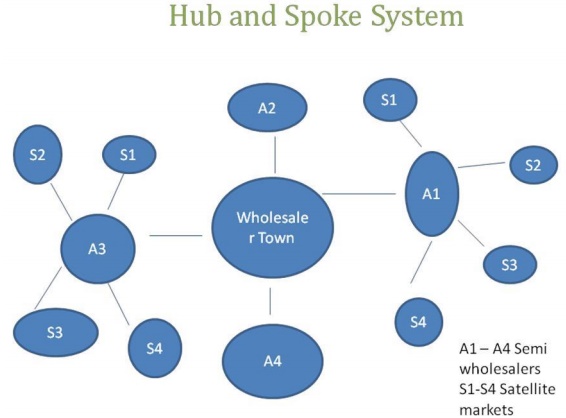Chapter: Business Science : Rural Marketing : Product Distribution
Emerging Distribution Models
Emerging Distribution Models
Corporate-SHG Linkage –SHG is a group of 10-15 women organized by government bodies or NGOs, who come together to form a mutual thrift group, to inculcate savings discipline and boost feelings of self-worth among women. Members of SHGs get matching loans from rural banks to set up income-generating enterprises. Originally, SHGs were formed to support poverty-alleviation programmes in rural areas after the success of the model in Bangladesh, where this concept originated.
HUL’sProject Shakti was targeted at strengthening the company‘sdistributionFMCG r drive. drive. Interested women from SHG‘s were appointed as Shakti entrepreneurs, they borrow money from their group corpus and provide services to 6-10 villages, covering a population of 6000-10000.They receive stocks from HUL rural distributors and make sales to both retailers and direct consumers in villages.
Satellite Distribution (the Hub-and Spoke System)
Stockists are appointed in major towns and feeder towns. By and large, they discharge the following functions : a) financing, b) warehousing and c) sub-distribution.
Retailers in and around the feeder towns get attached to these stockists. The manufacturer supplies goods to the stockists either on a consignment basis or on a cash or credit purchase basis.
The stockists take care of sub-distribution on the terms and conditions determined by the manufacturer or as agreed upon by the parties. Often, the stockists operate their own delivery vans to take care of secondary transport and local delivery jobs.
Coca Cola Hub & Spoke Model
Recently modified its distribution channel by shifting from a centralized model to a three-tier hub-and-spoke model. Invested in glass bottles and new vehicles in consonance with the three tier distribution structure. Large trucks were used to move stocks from the bottling plant to the hubs, medium commercial vehicles were used to move stock from the hub to the spokes and after that auto rickshaws and cycles were used to cater to the requirements of rural markets.

Syndicated distribution
Syndicated distribution is a viable and novel approach to gain entry into rural markets. Under this approach, two or more companies come together to form a syndicated trading organization, to jointly distribute a collective group of household products in rural markets by sharing distribution costs.
The solution for small companies is to tie up with a leading company, that already has a presence in the rural market, in order to distribute products through its distribution network. The golden rule is that the small company should not deal in the same products, that the leading company sells.
Eg. P&G uses the rural distribution network of Marico to sell Ariel, Tide etc. CavinKare used the distribution network of Amrutanjan pain balm for its Chik shampoo.
ITC’s Distribution Model
ITC has taken the initiative to reach rural consumers through its e-choupal model for backward and forward linkages for its agri-related business, for direct procurement of
agri produce from farmers and for selling a range of products through Choupal Sagar.
Petrol Pumps and Extension Counters
These petrol pumps, in addition to petrol/diesel, oil and lubricants are also selling consumables such as soaps, detergents, biscuits etc, particularly on the highways. These bunks may also think of stocking certain consumable agricultural inputs like fertilizers, seeds and pesticides.
12,000 petrol pumps of which 60% on highways close to villages Also sell consumables like food products and toiletries
IOC Kisan Seva Kendra
Barefoot Agent
Few insurance companies have taken the initiative of appointing barefoot insurance agents in order to penetrate rural markets. Agents are recruited on the basis of three parameters : 1) direct personal contact, 2) spreading information through group discussions 3) and motivating people to become life insurance agents through counselling.
Agricultural agent & Agricultural input dealers
There are about 2, 62,000 fertilizer dealers in the country. During off season most of the dealers don‘t have business, hence the companies m products also during their free time.
Other Channels
Hero Honda Motors has 400 dealers all over the country. The company has reported the emergence of an unofficial channel of distribution –village mechanics, local real estate agents and shopkeepers. These people take the motorcycles, usually in twos and threes, from company dealers after providing adequate security deposits and display them outside their premises for closing the sale. The paper work, however, is left to the dealer to complete.
Ideal Distribution Model for Rural
On the basis of the equation Per Capita Sales (PCS) = Annual Sales / Market Population, the ideal distribution model for rural can be depicted as follows :
The Project Shakti type of model best serves the needs of the Low PCS-Low population density segment consumers.
Related Topics